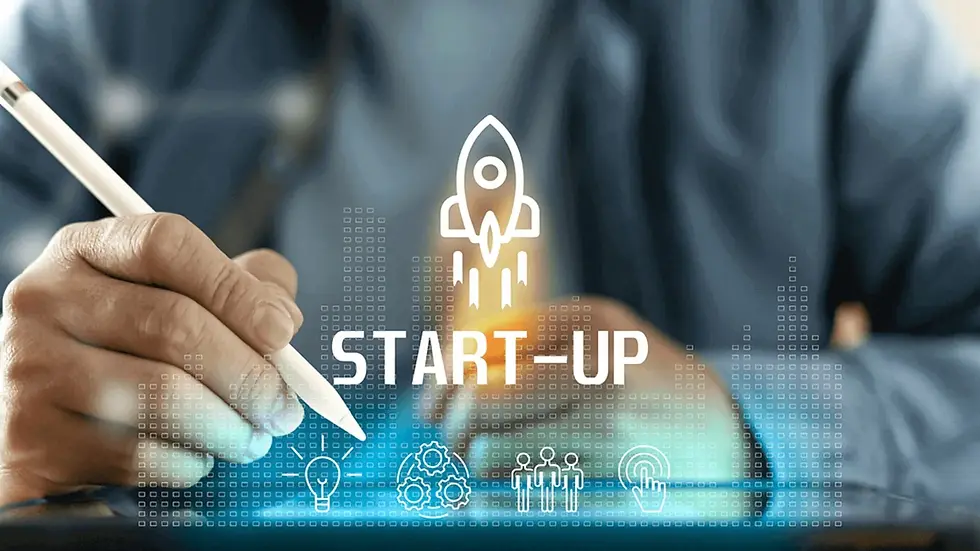Can Automated Branding Replace a Human Designer?
- bizionictech
- Apr 4
- 4 min read

Branding has always been an essential element of business success, helping companies establish their identity, build customer trust, and differentiate themselves in a competitive market. Traditionally, branding has been a human-led effort, requiring the creativity, intuition, and expertise of designers, marketers, and brand strategists. However, with the rise of automated branding solutions powered by marketing automation tools, businesses are increasingly leveraging technology to create logos, design marketing materials, and even develop brand strategies. The question remains: Can automated branding truly replace a human designer? To answer this, we need to explore what automated branding entails, its advantages and limitations, and how it compares to human-led design.
Understanding Automated Branding Automated branding refers to the use of marketing automation software and platforms to create and manage a brand’s visual and strategic identity. These tools utilize artificial intelligence (AI), machine learning, and pre-designed templates to automate various aspects of branding, such as:
• Logo generation
• Color scheme selection
• Font pairing
• Website design
• Social media content creation
• Digital marketing automation
Some well-known marketing automation platforms, like Canva, Looka, and Tailor Brands, provide businesses with AI-driven branding solutions that significantly reduce the need for manual design work.
The Advantages of Automated Branding
Automated branding has gained traction due to several benefits, particularly for startups, small businesses, and entrepreneurs looking to establish a brand presence quickly and affordably. Here are some key advantages:
1. Cost-Effectiveness
Hiring professional designers or branding agencies can be expensive, especially for small businesses with limited budgets. Marketing automation tools for branding offer a much more affordable alternative, allowing businesses to create logos and marketing materials without the high cost of hiring a human designer.
2. Speed and Efficiency
Automated branding platforms enable businesses to generate brand assets in minutes, whereas human designers may take days or weeks to develop branding concepts. This rapid turnaround is particularly beneficial for companies that need to launch quickly or rebrand on short notice.
3. Consistency Across Marketing Channels
Brand consistency is crucial for building a strong brand identity. Marketing automation software ensures that all branding elements—logos, color schemes, typography, and templates—remain uniform across various digital platforms, such as social media, websites, and email campaigns.
4. Ease of Use
With user-friendly interfaces and drag-and-drop functionality, digital marketing automation tools make it easy for non-designers to create professional-looking branding materials. This accessibility empowers business owners to take control of their branding without requiring advanced design skills.
5. Data-Driven Decision Making
Many marketing automation programs integrate AI analytics that analyze customer preferences, engagement rates, and industry trends. These insights help businesses make data-driven branding decisions that align with their target audience’s expectations.
The Limitations of Automated Branding
Despite its many advantages, automated branding also comes with limitations that may prevent it from fully replacing human designers. Here are some key challenges:
1. Lack of Creativity and Originality
AI-driven branding tools rely on pre-existing templates and algorithms, which can lead to generic or uninspired designs. Human designers, on the other hand, bring originality, emotion, and cultural relevance to branding, ensuring a unique identity that truly represents the brand’s values and personality.
2. Limited Customization
While marketing automation platforms offer various design templates, they may not provide the same level of customization and nuance that a professional designer can achieve. Businesses with complex or highly specialized branding needs may find these tools insufficient.
3. Inability to Understand Brand Storytelling
Branding is more than just a logo or color scheme—it’s about storytelling and emotional connection. Automated tools lack the depth of understanding required to craft a brand narrative that resonates with customers on a personal level. Human designers excel in weaving a compelling story through visuals and messaging.
4. Risk of Over-Reliance on Trends
AI-based branding tools often use data-driven insights to determine what’s trending, but following trends blindly can lead to a lack of differentiation. A human designer can strike a balance between trend-following and timeless design, ensuring a brand’s longevity.
5. Ethical and Cultural Sensitivity
Automated branding platforms may not always account for cultural nuances or ethical considerations in design. A human designer can factor in cultural sensitivities and social trends to create branding that is appropriate, inclusive, and well-received by diverse audiences.
Rather than viewing automated branding as a replacement for human designers, the future likely lies in collaboration between AI and human creativity. Many businesses are already integrating AI-powered marketing automation tools to streamline repetitive tasks while still relying on human designers for strategic and creative input.
Some potential hybrid approaches include:
AI-Assisted Design: Designers use AI tools to generate initial branding concepts, then refine and customize them manually.
Data-Driven Insights for Designers: AI can provide analytics on customer preferences, allowing designers to make informed branding decisions.
Automated Content Creation: AI-generated marketing materials (social media posts, email templates) can be personalized by human marketers to enhance authenticity.
Conclusion: Can Automated Branding Replace Human Designers?
While marketing automation platforms and digital marketing automation tools offer significant benefits in terms of speed, cost, and efficiency, they cannot completely replace the expertise, creativity, and emotional intelligence of a human designer. The best approach is to leverage automation where it excels efficiency, consistency, and data analysis—while relying on human designers for customization, storytelling, and deeper brand strategy.
For businesses, especially startups and SMEs, automated branding can be a great starting point. However, as brands grow and require a stronger emotional connection and unique identity, investing in human designers remains invaluable.
At Bizionic Technologies, we embrace the power of AI-driven branding while recognizing the irreplaceable role of human creativity. Our approach blends marketing automation with expert design to deliver compelling, customized brand experiences. Whether you're looking for automated branding solutions or professional design expertise, we help you create a brand that stands out in the digital age.




Comments